Being from Hawaii, I've had my fair share of mixed plate lunches. What is a mixed plate lunch you ask? A mixed plate lunch or just plate lunch is unique to Hawaii and finds it origins in Japense bento boxes. A plate lunch typically consists of two scoops of rice, macaroni salad and a main entree. As more immigrants came to Hawaii from other countries to work in the sugar and pineapple plantations, they brought with them their culinary cultures. As a result plate lunches started to include Filippino, Portuguese, Puerto Rican, Chinese, Korea, Okinawan, and Hawaiian foods.
On May 23, 1999 the exhibition, From Bentō to Mixed Plate: Americans of Japanese Ancestry in Multicultural Hawai’i, opened in the Arts and Industries Building. The traveling exhibition organized by the Japanese American National Museum featured artifacts, family photographs, and personal accounts that explored the role of Japanese-Americans in a wide range of areas and their adaptation to life in Hawaii. As part of the Smithsonian's exhibition, the National Museum of American History lent the Olomana, a 9-ton, six-wheel steam locomotive that was purchased in 1883 by the Waimanalo Sugar Co. to use on its 3-foot-gauge railroad located near the ocean on the northeast side of Oahu.
May is Asian Pacific American Heritage Month and the Smithsonian has a number of events, programs, and resources that tell the stories of the generations of Asian and Pacific Islanders who came to the United States and influenced its history and culture.
Related Resources
- Asian Pacific American Heritage Month programs at the Smithsonian for 2015
- Smithsonian Asian Pacific American Center
Related Collections
- Asian American and Pacific American related materials and content at the Smithsonian
- Accession 06-06: Office of Special Events and Protocol, Event Files, 1998-2001, Smithsonian Institution Archives
Produced by the Smithsonian Institution Archives. For copyright questions, please see the Terms of Use.

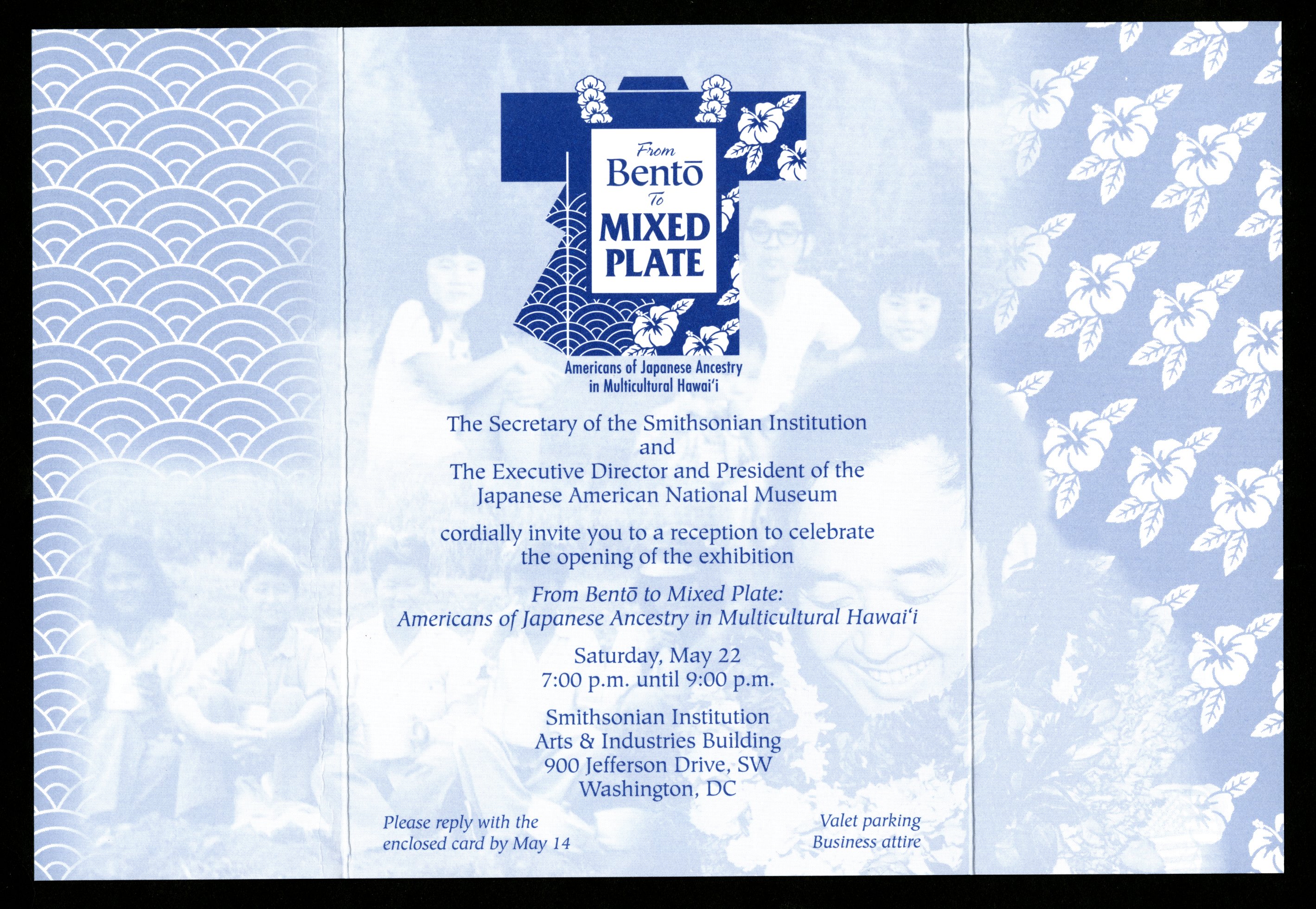
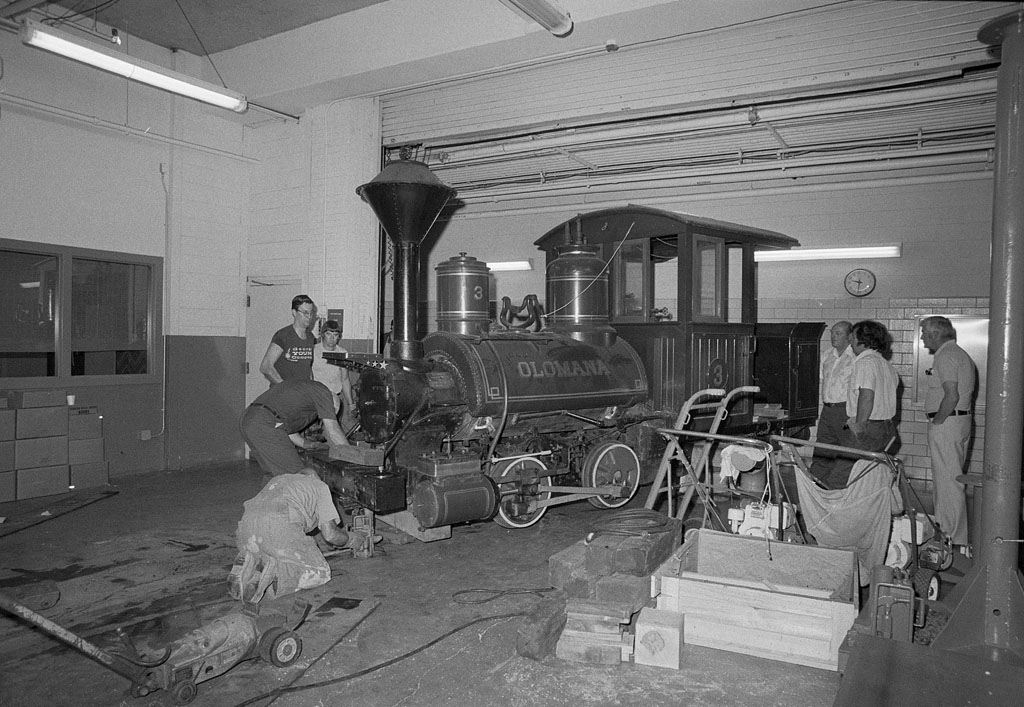
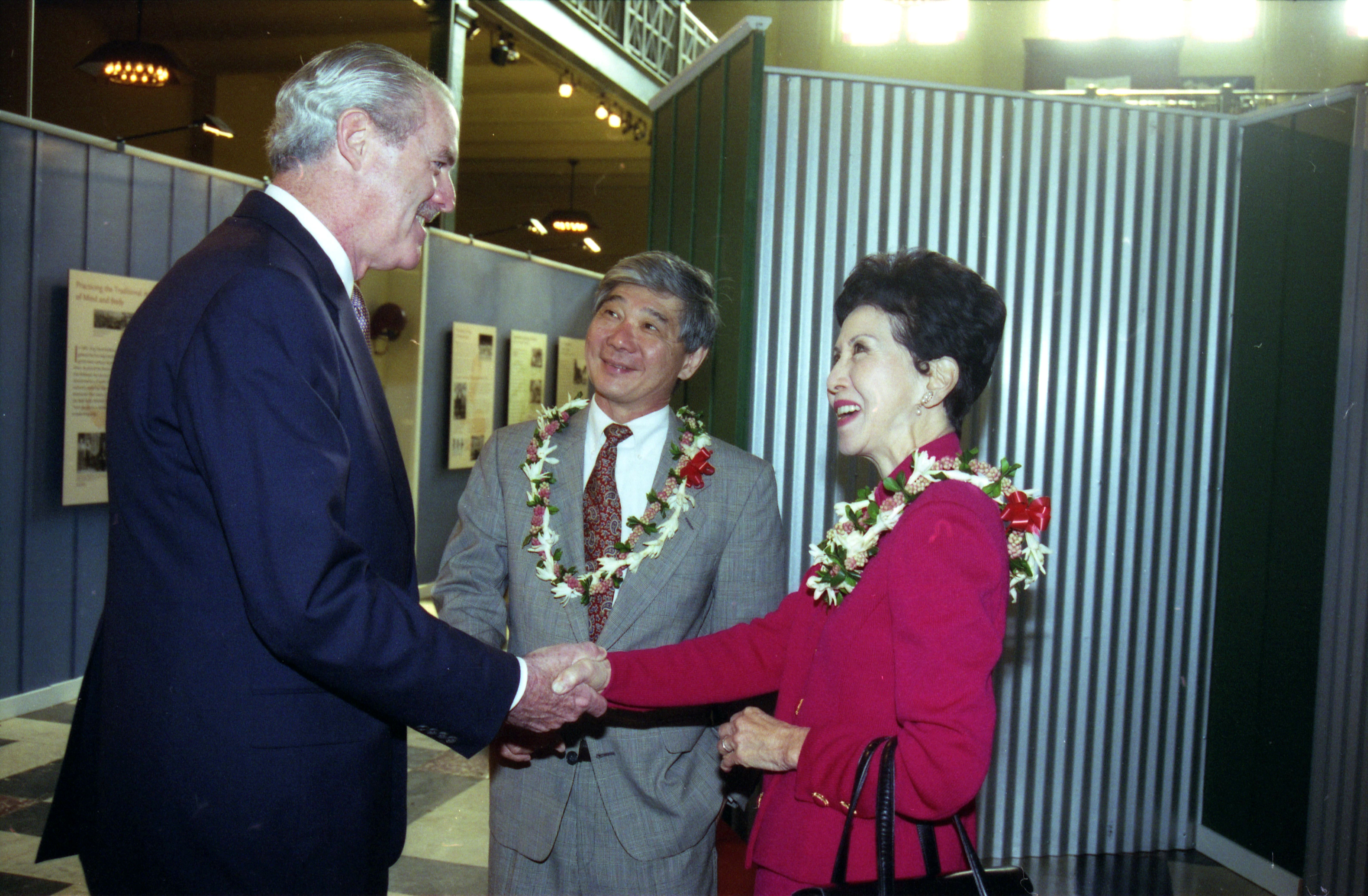

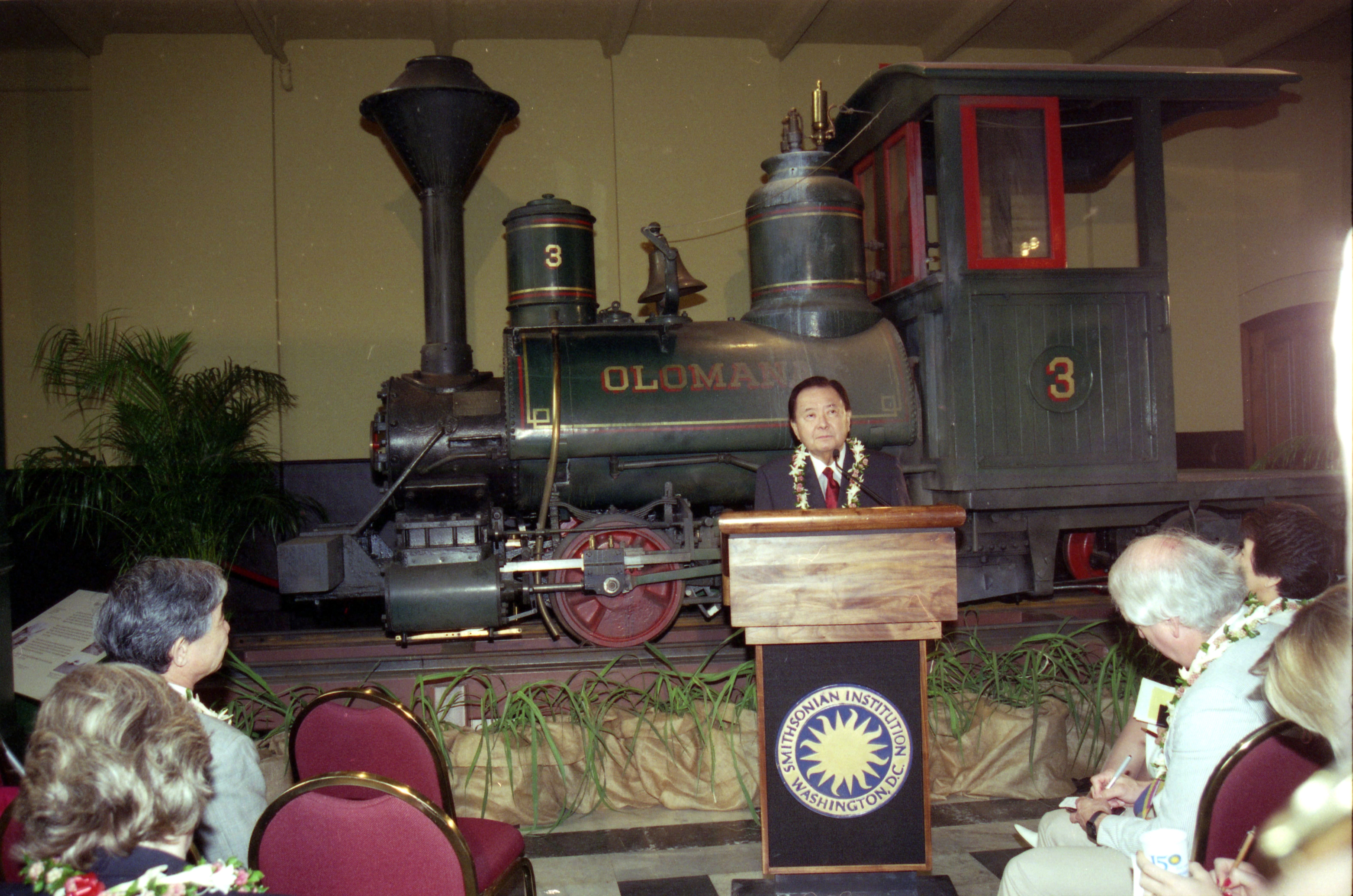



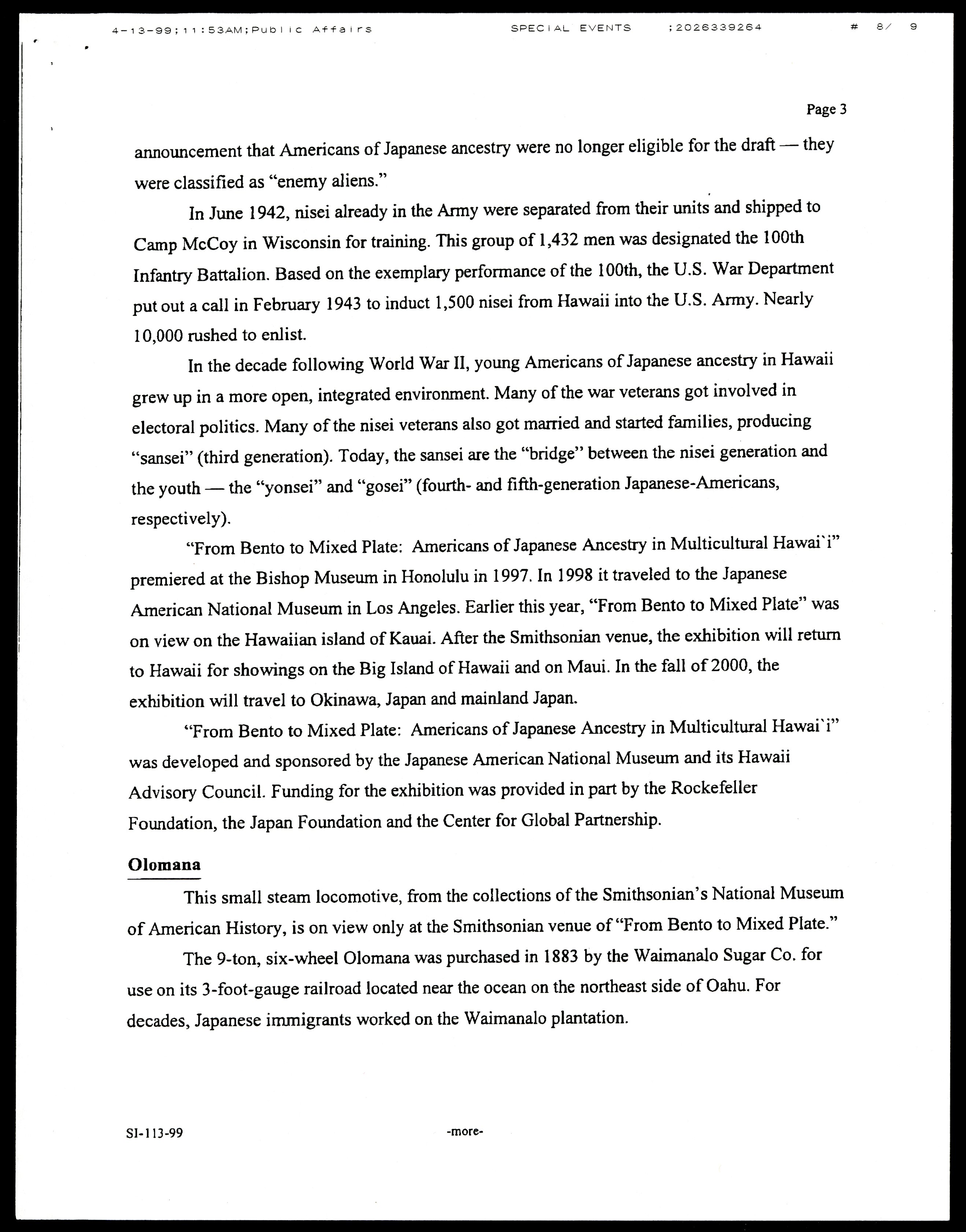

Leave a Comment